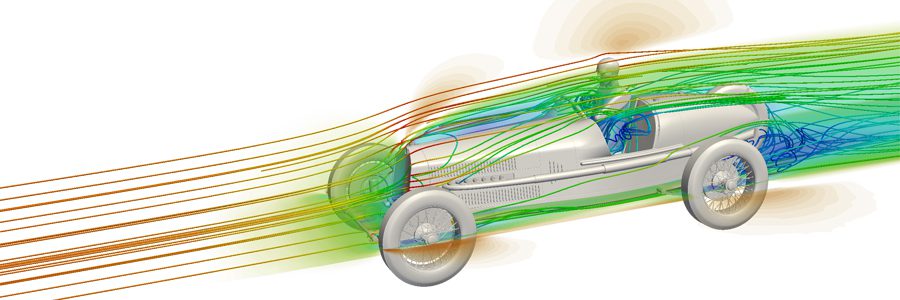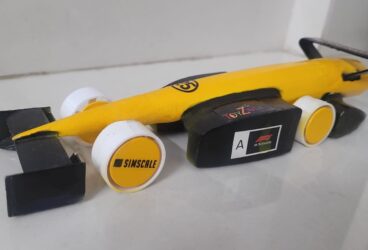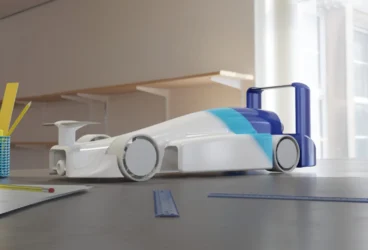Transportation has been a fundamental issue for thousands of years. The myth of rapid movement has attracted humankind since the first wheel was invented in Mesopotamia at around 3500 B.C. [1]. Before the Ford Motor Company unveiled its Model T in 1908, which was created by Henry Ford and his colleagues, several inventors had also tried to release road vehicles with different mechanical systems and even fuel types—but no one had ever dared to attempt mass production. Today, according to the independent organizations, the fastest car available on road hits some 430 m/s at maximum speed [2]. The developments in the car industry to date are quite spectacular, which is thanks in large part to high-capacity technical facilities and rigorous examination processes. Because of these advancements in the automobile industry, companies have been rallying to produce an efficient car based on fuel consumption, performance, comfort, reliability, and visibility.

Aerodynamics is the field that investigates the interrelation between moving solid objects and fluid. It has a substantial effect on fuel consumption, speed, and visual design which might be expressed as privilege topics for consumers. The physics behind aerodynamics is virtually associated with the drag coefficient, which is the dimensionless number that demonstrates the degree of conflict between a moving body and surrounding fluid. As the drag coefficient decreases, the performance of road vehicles increases based on fuel economy and speed [3]. The drag coefficient can be expressed by the following equation:
Cd=2*F/(ρ⋅A⋅V²)
Where Cd is the drag coefficient, F is drag force, ρ is the density of the air, A is the cross-sectional frontal area, and V is the velocity of the car. Though this experimental study has broadly been used to examine aerodynamics, it is still a challenging process to establish a proper experimental setup that includes various hurdles, such as mechanical facilities, the cost of operation, and scale flexibility. As a result, computational fluid dynamics (CFD) has been a frequently applied tool in aerodynamics for more than half a century. For instance, a validated CFD study could reduce the total amount of experimental studies down to one in four, or possibly more.
Limitation: The Most Aerodynamic Structure

The speed of the transportation is closely related to the shape of the body engulfed by air. Bullet, birds, aircrafts all have a similar structure to reduce drag force as much as possible. An airfoil—also called an aerofoil—is the pattern that enables the efficient movement of an object inside the zone where fluid exists. To achieve high-speed transportation on the road, design patterns in accordance with the shape of the airfoil have been implemented on the main body and auxiliary equipment by manufacturers for more than a century.
It is quite simple to examine an airfoil with CFD due to the high computational facilities. Here is an online project that enables you to investigate incompressible airfoil simulation within a web browser.
Examination: Wind Tunnel Testing and the Ahmed Body
Wind tunnel testing is the traditional method for examining aerodynamics. Full-scale and reduced-scale are the variants of the system that have been used to realize experimental studies. Both experimental and numerical studies comprise several intricate parameters—thus it is hard to control simulations during the examination. To mitigate the effect of those hurdles, a standardized system is required in order to ensure a credible result.
The main purpose of the Ahmed body is to validate the parameter’s drag coefficient, velocity profiles, and the wake flow patterns of steady-state, incompressible turbulent flow. The Ahmed body is a prominent body with a simple structure that enables researchers to investigate the change in shape through the external body. It is also necessary to validate the numerical simulation according to a reliable, experimental measurement. In essence, a validated numerical case might be specified as the wind tunnel testing in the numerical domain.
Detection: Significance of Drag Force
- At highway speeds, aerodynamic instabilities belonging to drag force are responsible for up to 50% of total fuel consumption [5].
- A well-designed outer surface based on airfoil can reduce fuel consumption by up to 7% [6].
- Drag force in fuel consumption can vary up to 75% regarding design and dynamic conditions [7].
The effectiveness of drag and repartition through the body of a road car [8]:

The main purpose of the aerodynamics simulation is to accurately predict the forces and the movements over the external surfaces of the car. Thus, the design of the car can be reinstated to reduce the effect of forces on the opposite direction of the movement.

In order to achieve a plausible aerodynamic structure, the detachments through the boundary layer should be prevented, as these often cause a sudden change of velocity and result in a turbulent flow region (wake flow) behind the road vehicle. The pressure gradient at the rear side cannot increase because of the circulation characteristic of wake flow (Figure 7).
Finalization: Aerodynamics and CFD
To optimize a bluff body like the Ahmed body requires various theoretical studies and experiments. Before computational fluid dynamics (CFD) emerged, every pre-designed model was examined experimentally to detect preconditions. Therefore, a huge amount of time, money, and effort was being expended during processing. For instance, it was taking a few days just to discuss the change in angle of attack for a rear spoiler.
Even though the evaluation of the external shape of road vehicles is realized based on safety, comfort, and visualization, after the oil crisis of the 1970s, manufacturers carried out various technical projects to optimize the system in order to decrease fuel consumption [9]. Despite having real-time surveillance through wind tunnel testing, several drawbacks emerged before and after running, such as measurement instabilities, sustainability of flow conditions, examination of the boundary layer, need for a relatively large amount of experimental time, including model manufacturing and preparation, and the cost of setting up and running experiments, etc. Hence, implementing the numerical tool to carry out pre-examination in the field of aerodynamics was indeed inevitable.
So far, the improvements in CFD tools and hardware have come a long way. They now provide a variety of methods to examine aerodynamics in advance, thereby lowering the number of experiments. Reynolds-averaged Navier-Stokes (RANS) and large eddy simulation (LES) approaches are widely applied numerical models for the purpose of investigating aerodynamics of any structure [9]. The advantages of CFD can be concluded in terms of cost and facilities:
Cost
- Cheaper than wind tunnel testing
- A more time-efficient process—reduces testing period
- No need to use any futile manufacturing issues.
Facilities
- Enormous developments in CFD to study the complex structure
- A high degree of credibility by validation
- Examines boundary conditions thoroughly
- Scrutinizes the whole structure without disruptive measurements
- Apace adjustable model if any change is required
- Runs simultaneously on separate computers.

Thanks to the development of the computational domain (hardware and software), we can now investigate the effect of rear spoiler in about an hour—sometimes even in minutes!
How does aerodynamics work in CFD? Follow this step-by-step tutorial to learn.
Check various free, online projects based on aerodynamics carried out with SimScale.
Discover all the simulation features provided by the SimScale cloud-based CAE platform. Download the document below.
References
- https://www.smithsonianmag.com/science-nature/a-salute-to-the-wheel-31805121/
- https://www.digitaltrends.com/cars/fastest-cars-in-the-world-photo-gallery/
- https://www.grc.nasa.gov/www/k-12/airplane/dragco.html
- https://papers.sae.org/840300/
- https://www.ijens.org/Vol_14_I_02/145302-6868-IJMME-IJENS.pdf
- https://www.seai.ie/Your_Business/Technologies/Transport/Aerodynamics_Transport_Guide.pdf
- https://dumas.perso.math.cnrs.fr/Cha1.pdf
- J.D. Anderson. Fundamentals of Aerodynamics. McGraw-Hill, New York, USA, 2006.
- https://www.cimec.org.ar/ojs/index.php/mc/article/viewFile/3233/3156
- https://www.mech.kth.se/courses/5C1211/Intro04.pdf



